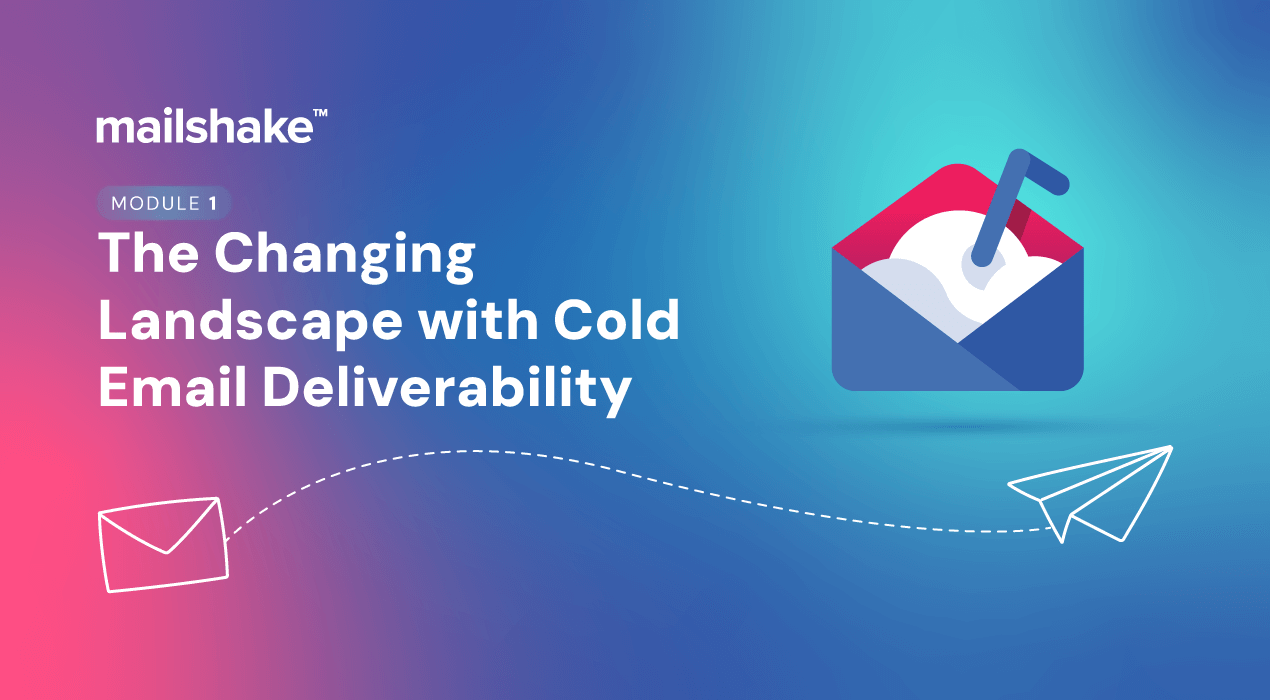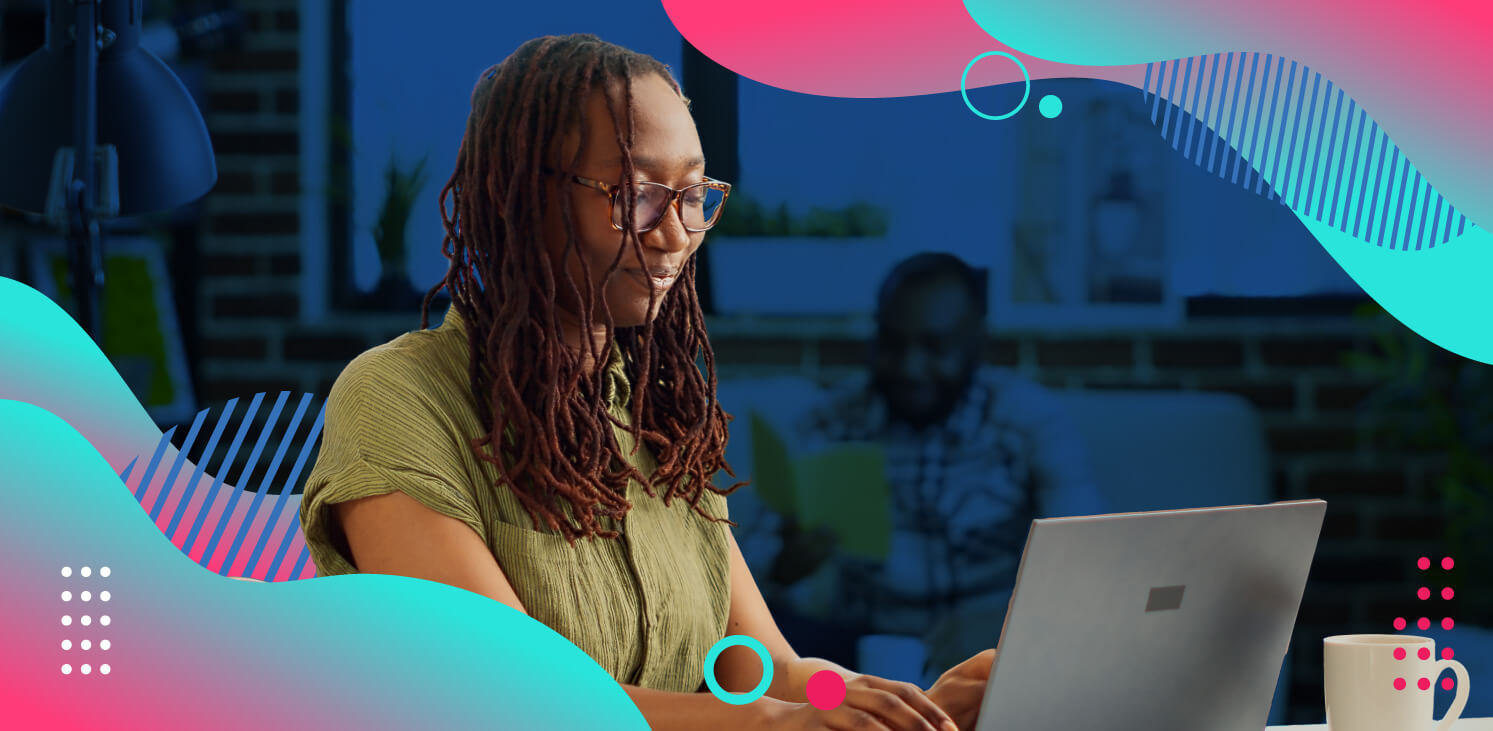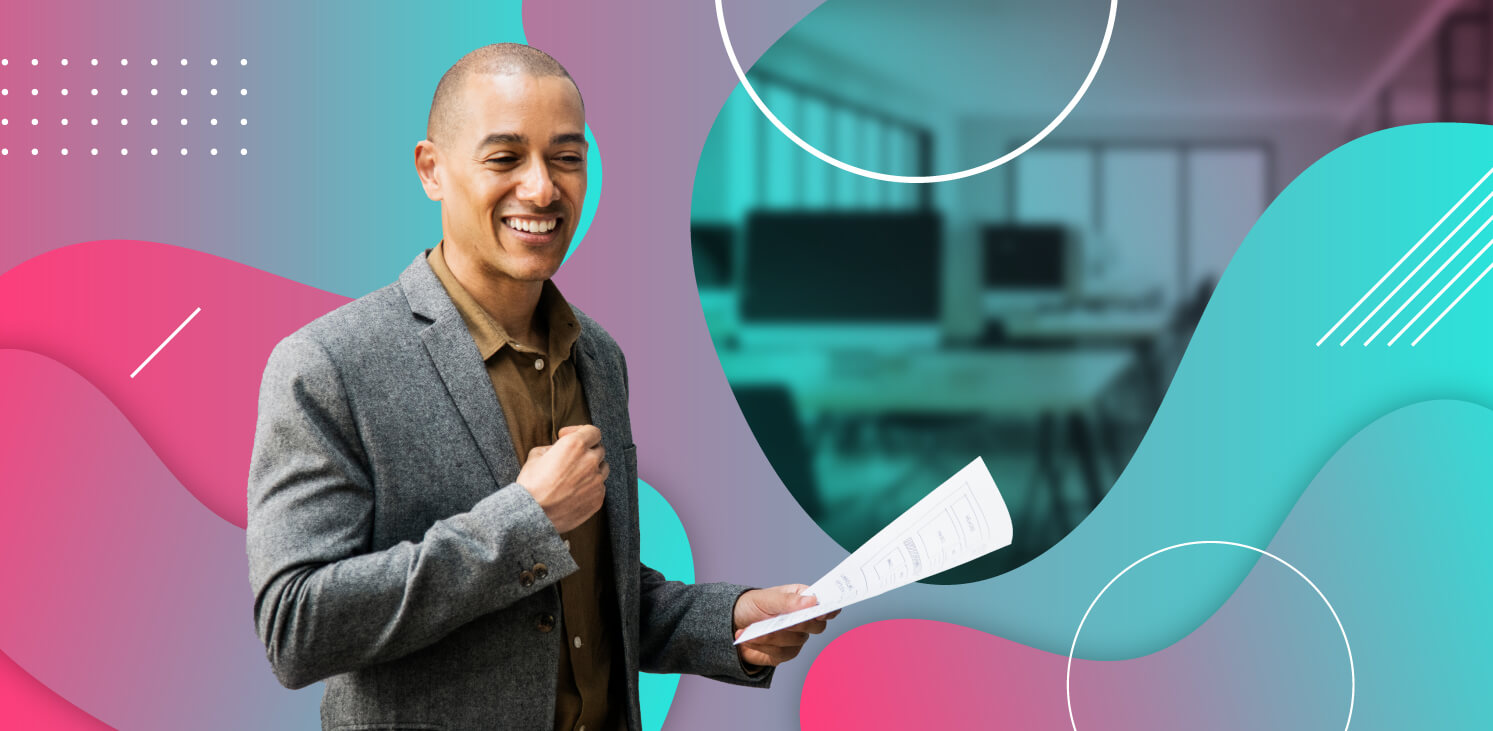How To Write a Sales Follow-up Email After No Response [10 Templates]

Contents
If the thought of writing a follow-up email makes you feel a little uncomfortable, you’re not alone. Our instincts tell us that if someone hasn’t replied to our previous email, they’re not interested and will not like it if we bother them again.
Unfortunately, in this case, our instincts are often wrong. Very few prospects say “yes” to the first ask – or, for that matter, to the second, third or fourth.
Jump-start your follow-up email strategy instantly with our proven email templates below.
How To Write a Follow-up Email
Now that you know how important it is to follow up and how long (give or take) you should wait before sending each email, let’s go through how to write the follow-up email itself.

Remember that it’s important to test for the best subject line when following up. Those tiny sentences can make or break you: 47% of people open an email and 69% report it as spam based on the subject line alone.
Give your email subject lines the time and effort they deserve.
THE RIGHT FLAVOR
Mailshake’s Email Copy Analyzer provides real-time feedback and suggestions for improving deliverability and readability.
We’ve split writing a follow-up email into five sections. To help you, we’ve included examples of what you might say in each section – the idea is that you can then link everything together into a custom follow-up email template.

1. Add Context
Try to jog your recipient’s memory by opening your email with a reference to a previous email or interaction. Even if your recipient draws a blank, they’re more likely to react positively to the follow-up if they’ve been reminded of the fact that they’ve heard from you before.
Openers you might want to try include:
- I just wanted to follow up on the email I sent last [day of the week email was sent] about [subject of email].
- I just wanted to follow up to see what you thought about [subject of email].
- Hope this doesn’t sound weird, but I saw that you read my previous email.
2. Add Value
You should never send a follow-up without upping the ante and demonstrating your worth.
Avoid lazy follow-ups – ones where you’re simply “touching base” or “catching up” – that don’t add anything other than one more email in their inbox. Provide value at each interaction. Make it worth their while to open, click and respond.
Opportunities for organic, natural interaction and follow-ups arise from offering them something valuable, be it a relevant physical item shipped to them, or a webinar, case study, template or other digital resources.
You can easily get a number of follow-ups around these value-added offers. Make it high quality and relevant to your recipient. You want to be seen as an asset to them.
If you’re not providing some sort of additional value, there’s very little reason to contact them and even less incentive for them to respond or care.
3. Explain Why You’re Emailing
Go on to explain the reason for your follow-up email in a manner that’s both direct and concise. Tell the recipient what you want. If this hasn’t changed since your previous email, remind them.
- [product name] could really help you [element of prospect’s role] more effectively. I’d love to have a quick chat to find out if I’m right.
- [product name] could really help you and I wondered if you’d be interested in trying it out for a month or so (completely free, of course).
- We’ve just launched [product name], and it could make a big difference to [element of prospect’s role]. There’s a link to a resource that will tell you more below, but it’d be great if we could also discuss your current needs so I can figure out exactly how [product name] might help you.
Focus on the prospect here. Remove “I” statements from your text.
4. Include a Call to Action
Make it easy for the email recipient to respond. For example, if you’re trying to arrange a meeting, suggest a specific date and time (and place, if you’re arranging an in-person meeting).
- Does 2:15 p.m. on Thursday work for you?
- Are you the right person to talk to about this? If I’m in the wrong place, could you point me in the right direction?
- Just reply “yes” if you’d be interested in getting some more information and I’ll send a couple of short docs over.
If you’re part of a marketing team or you’re a sales professional, try not to make the mistake of leaving it vague and ambiguous. Make your call to action crystal clear and hard to resist. What exactly do you want them to do? Did you provide a link to your website? Tell them so that you can get the best possible results.
5. Close Your Email
Wrap up in a way that feels natural to you and is sympathetic to your interactions with the recipient so far.
- Let me know what you think! [Your name]
- Let me know if you have any questions. [Your name]
- Speak soon? [Your name]
- I look forward to hearing from you! [Your name]
ADD IT TO THE MENU
Once you’ve crafted an email you love, save it as a template so you and your teammates can use it again.
Response Rates: Ideal Number of Follow-ups
Response rate statistics have shown a mere 18% response rate to the first email sent, all the way down to 13% for the fourth. However, the sixth email in the sequence received a massive 27% response rate.
A similar study from Yesware saw a 30% reply rate to the first email and 14% to the fourth. They actually sent 10 emails in total and even the very last one had a 7% response rate.

Despite this, a colossal 70% of email chains stop after just one unanswered email.
It gets worse, or better, depending on how you look at it: Roughly 80% of prospects say “no” four times before they ultimately say “yes.” But 92% of people give up after hearing “no” four times.
So, why does that matter? </spanIt means that only 8% of salespeople – those following up at least five times – are generating 80% of all sales.
Furthermore, other studies reveal that an email drip series with four to seven messages delivers three times more responses than those with only one to three (27% and 9%, respectively). In fact, even following up just once can convert 22% more replies.
Needless to say, sending follow-up emails is essential (unless you like missing out on sales!).
“You can’t follow up too much in the earlier part of an engagement.”
~Damian Thompson, LeadFuze
Did you know there are even more optimal times and days to send your follow-up emails? We found that, on average, Tuesdays are the best day to send emails, while 6 a.m. is the best time.
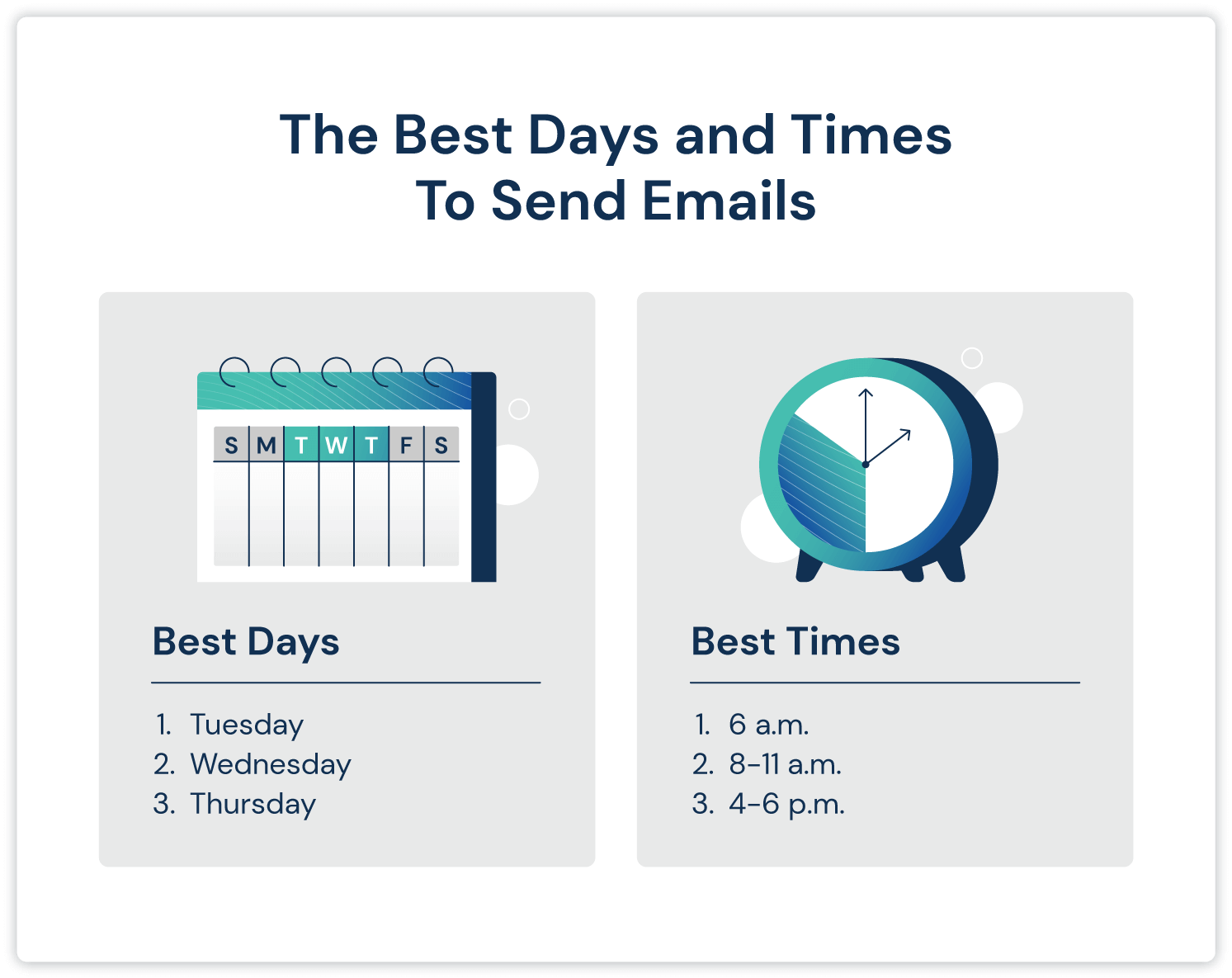
How Long Should You Wait Before Following Up?
The vast majority of emails are opened the day they’re sent, and if the recipient’s going to reply, they’re probably going to do that the same day, too. That means it’s pretty safe to assume that if someone doesn’t reply the day you send your original email, they’re not going to reply at all.
How safe? About 90% of recipients open and reply – if they’re going to reply – on the day they receive an email.
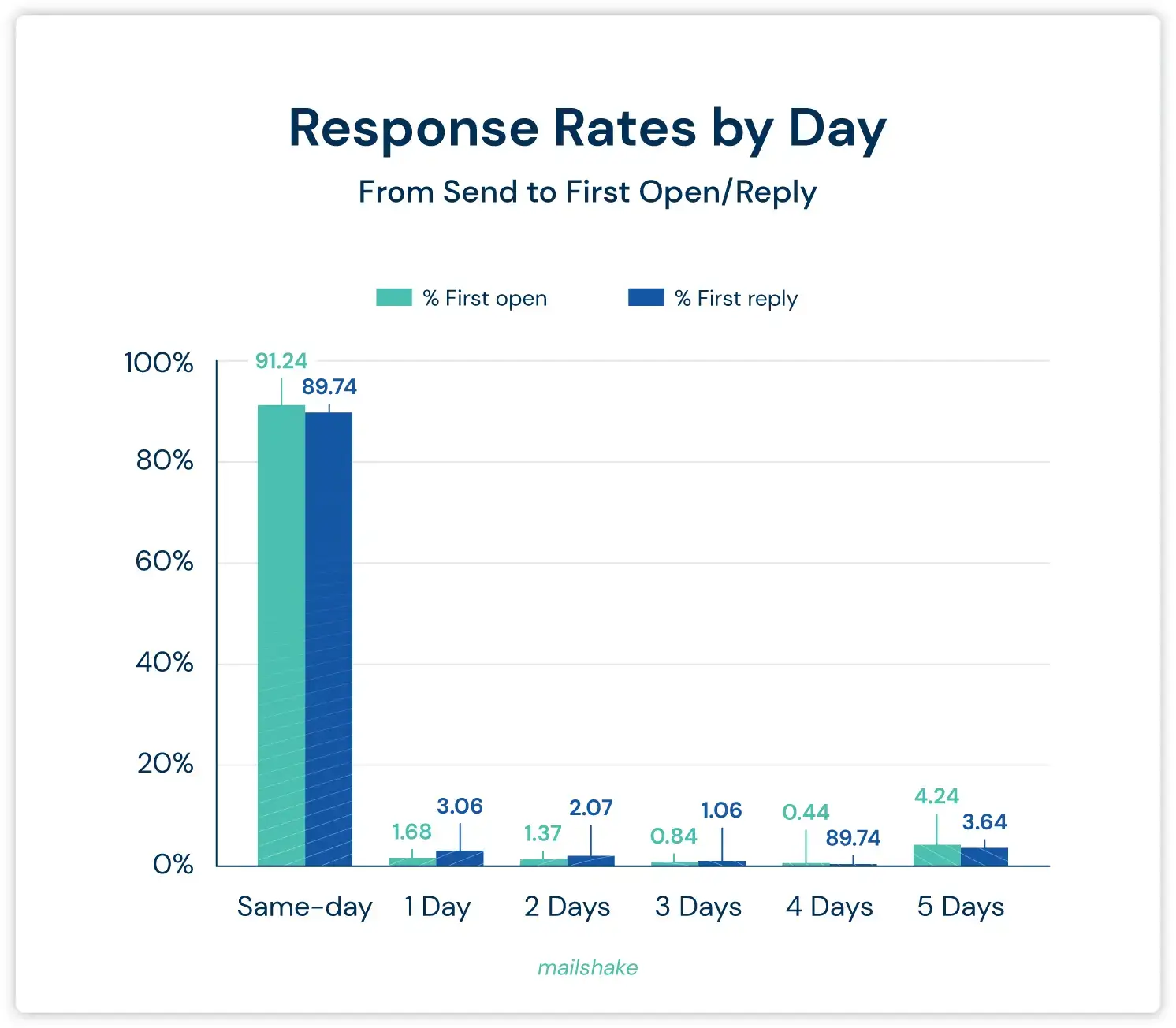
So, How Long Should You Wait Before Sending a Follow-up Email?
As a general rule, two or three days is a good amount of time to wait before sending your first follow-up email. You should then extend the waiting period by a few days for each subsequent email following your first message, especially depending on the number of follow-ups you’re planning to send.
You can and should experiment with timing for subsequent follow-ups, but that schedule is as good as any until proven otherwise. You want to follow up without annoying your targets with daily blasts.
Go with that until you discover that it’s not working for you and your audience.
GOOD TIL THE LAST DRIP
Add drip messages to your campaign sequence by automating your follow-ups
Create an Email Follow-up Strategy for Success
OK, so you know why it’s important to follow up, how long to wait and have a ballpark figure on how many messages to send altogether.
Before you start, you need to set yourself up for maximum success. The first step? Write it all down.
Writing down your goals and workflows is beneficial on many fronts: It creates consistency amongst everyone on your team, it keeps everyone on the same page, and it actually helps you achieve your goals better than if you didn’t write them down.
To maximize your follow-up success, have a concrete set of “rules” regarding time, frequency, quantity and message. Be consistent. And automate.
Diversify Your Channels
Another key component that separates those rocking the follow-up game from those just going through the motions is an omnichannel approach.
Yes, email is your best bet and the preferred channel for communication overall. but that doesn’t mean the other channels aren’t worth the effort.
Diversify Your Channel
Another key component that separates those rocking the follow-up game from those just going through the motions is an omnichannel approach.
Yes, email is your best bet and the preferred channel for communication overall. but that doesn’t mean the other channels aren’t worth the effort.
“To me, social isn’t a ‘Should I do it?’ You have to. If your audience lives on LinkedIn or Twitter or Instagram, you have to be engaging them there.”
~Jake Dunlap, Skaled
Explore an omnichannel approach that includes email, video, social media and the telephone – especially if you’re not getting a response from just one of them. Companies with an omnichannel engagement process see a 9.5% year-over-year growth in annual revenue – almost three times more than those that do not – in addition to increasing the engagement itself.
An omnichannel experience delivers the goods on prospecting, nurturing and retention.
Which channels do they seem to prefer and/or where did you first engage with them and what do they do on each (just shooting the breeze on social, business on email, vice versa)? Take your cue from them. Engage with them where and how they seem to prefer.
A BLENDED APPROACH
Make cold calling part of your sequences with the built-in Mailshake Dialer.
Decide What You Want To Achieve
Before you do anything else, it’s mission critical that you decide what you want to achieve from this email (or emails).
For example, you might want to:
- Get more information or a specific piece of information
- Arrange a meeting
- Close a sale
Every situation is unique, so exactly what you want and need to get out of a follow-up email will likely change with each campaign you work on and, potentially, even between each follow-up you send.
It’s imperative that you know, though. Never send an email – follow-up or otherwise – unless you know exactly what you need to get out of it.
Put Yourself in Their Shoes
Before drafting or sending, consider the user experience (UX). It’s a pivotal element of your business success. More than price. More than the product or service itself.
Think about the frequency and activity of your follow-up emails. Forget for the moment about what the experts say you should or should not do, and look at it only from the customer’s point of view.
Too many follow-ups are annoying. Too little loses momentum. Find the right balance for your targets.
Ask yourself: What’s in it for them? How are they feeling? What sort of experience are they having? Do I have a reason to follow up (other than just to follow up)?
Ask and answer these types of questions, and you’ll design a follow-up campaign from the ground up built for them, not you. And that can make all the difference.
In terms of your approach, all follow-ups are not created equal, so let the situation set the tone:
- If prospects have requested a call or demo, you can be more aggressive to fulfill their need.
- If they’ve downloaded something, they have shown interest but did not explicitly ask to be contacted, so you’ve got to demonstrate your value (different drips based on what specifically they downloaded).
- When you’re sending cold emails, you’ve got to tread very lightly because they’ve requested nothing from you.
MIX IT UP
Our integrations allow you even more power – initiating outreach based on page visits, document downloads and more.
Need some tips? Here are 10 follow-up email templates that you can steal.
10 Follow-up Email Templates to Use in 2024
If the suggestions above aren’t enough for you to work with, here are a few samples from the selection of sales email templates we offer our users at Mailshake.
1. Give a Quick Compliment and Add Value
I saw on Twitter you’ve been sharing some awesome posts on conversion rate optimization.
Recently I spotted these two super helpful posts and just wanted to share them with you:
{{Link 1}}
{{Link 2}}
Would also be happy to share a little about our conversion rates at {{Your company}} if you’re up for it!
Cheers,
{{Your Name}}
This template is an example of a simple, polite follow-up email – it gives a relevant and innocent explanation of why you’re reaching out, while also throwing in an easy compliment. After that, it’s a quick win of sharing another piece of content or two that might interest them or their followers. Instead of following up for the sake of following up, this email attempts to pivot the conversation and provide value.
Finally, the sign-off is a simple request that can be answered with a yes or a no. A simple formula like this works because it doesn’t take much time to skim, provides immediate value and comes off as conversational instead of salesy.
2. Make it Easy to Reply With a Yes or No
I constantly review business relationships in my CRM. Typically, if I don’t hear back from someone for 30 days, it means they’re either really busy or just not interested.
Send a simple “yes” if you’re interested or “no” if I should remove you from the list!
Thanks,
{{Your Name}}
You’ve probably seen something to this effect before, but that’s not to say you shouldn’t use it yourself. This format is popular because it works. And it works because it makes it incredibly easy for prospects to reply. Just bear in mind that if you use it, you’ll need to pay extra-close attention to how much you adapt it.
3. Acknowledge Their Interest
I noticed that you opened the email I sent you on Friday and checked out our site {{Your URL}}, but I never heard back from you.
I was simply wondering if these actions mean you’re interested in learning more about {{Your business name}} and how we can provide value to online businesses similar to yours at {{Their business}}.
As someone who is constantly reaching out to numerous prospects up and down {{Your location}}, I wanted to follow up today to see if you have any questions about {{Your business name}} or any of our products. I think you’re the perfect person to discuss {{Your business name}} with.
Do you have 10 minutes for a brief phone call next week?
Cheers,
{Your Name}}
This email revolves around a trigger event. If you’re using software like Mailshake, you can track things like email opens and clicks to links provided in the email. Since they clicked something, you know they were at least somewhat interested, so this follow-up email is perfect for starting that conversation.
4. Show Absolute Belief in Your Product’s Fit for the Prospect
I understand your position, but I wouldn’t follow up with you if I didn’t strongly think that {{Your company}} can help {{Prospect company}} solve {{challenge}} by {{Product benefit #1}] and {{Product benefit #2}}.
Let me know if you want me to jump on a call so I can walk you through what we do.
Cheers,
{{Your Name}}
In the event that a prospect provides a specific objection to your product or service, don’t give up just yet. This template addresses the concern and allows you to continue the email thread by demonstrating your absolute confidence in your product or service, while simultaneously reinforcing how recipients will benefit.
5. Link Building Follow-up Template
How do you approach link building?
You often send an email that links to an outdated article or a broken link, and then tell the site owner you’ve published a fresh, updated article, which could be a great addition to their content. Sound familiar? It’s a tried-and-true method.
But most of the time, that’s not enough to guarantee a response.
If your email is met with deafening silence, here’s a follow-up email template that might help
I know you’re busy managing {{business or website name}}, and removing a broken link is something that may take too much of your precious time.
But still, here’s why you should remove bad links from your content:
- According to Moz, if you have a 404 error, you’re losing out on a huge chance to get your content ranked.
- BlizzardPress recently removed all of their 404 errors, and almost instantly climbed up 1,713 spots. It won’t take much of your time. I have a spreadsheet that includes all the broken links. It will make the process 100 times easier for you.
- I would love to share the spreadsheet and help you with this process. Are you interested?
Talk soon,
{{Your Name}}
6. Sales Outreach Follow-up Template
Let’s say you’re a freelance designer and pitched a client for your design services.
In your outreach email, you listed all the companies you’ve helped in the past, plus you’ve also shared an idea about how you can help them with their branding.
While there are other ways to get on their radar, digital magic can happen with this follow-up email
A few days ago I shared a design idea with you. Did you get a chance to look it over?
To illustrate how effective it could be, I’ve gone ahead and taken the time to create a wireframe for your website. It’s designed around the core value of your business. I’ve had a lot of experience with projects like yours, including {{Previous client’s}} {{Project or asset}}.
I have a very solid foundation in communicating the creative identity of a brand through {{Project deliverable}}, and I’m looking forward to helping {{company name}} deliver even more unique value to your customers.
Are you available for a quick chat this week?
Thanks,
{{Your Name}}
7. Guest Post Follow-up Template
How do you secure a guest post on a bigger publication?
Normally, you do this by writing a great outreach email that contains every important element: introduction, headline ideas for the guest post and links to your previously published content.
But sometimes, even all that isn’t enough. In those cases, you can use this follow-up email that’ll instantly show you as the brilliant, hard-working writer you are.
I sent you some headline ideas last week. Have you had a chance to look at them?
I’m really excited to write for {{website name}}, so I outlined the first post this morning.
See it here: {{outline link}}
What do you think?
Let me know if you’d like me to add/remove something.
Cheers,
{{Your Name}}
8. Event Follow-up Template
Following up after an event is a great way to keep you at the top of your new contact’s inbox. But remember that many people walk away from a conference or networking affair with a ton of new contacts, meaning they could be facing a flood of emails when they next log in.
Sometimes emails get lost – it happens. Usually, it’s nothing personal.
A successful follow-up is easier than it may seem. Try a new subject line and mention some key details from your in-person interaction. Maybe you were wearing an unusual-colored shirt or shared a common favorite artist…mention it!
Here’s a quick template to reignite that spark:
Remember our conversation on {{Subject}}?
I’ve been thinking about it a lot and I’d love to hear your opinion on {{Industry pain point}}.
Are you free for a call tomorrow?
Best,
{{Your Name}}
9. Invoice Follow-up Template
Listen, this is one of the most uncomfortable emails you have to send. But it has to be done.
Following up after you’ve sent an invoice to a client can be awkward for both parties, though it doesn’t have to be.
The key is to be both respectful and straightforward.
Just wanted to send a gentle reminder about the invoice I sent on {{date}}.
I’ve re-attached the invoice in case it got lost in your inbox.
Please let me know if you have any questions!
Kind regards,
{{Your Name}}
10. Interview Follow-up Template
Always follow up after an interview. And always follow up after your follow-ups. This can be the difference between getting a job and sitting around wondering what may have happened.
Not only will it keep your name at the top of your potential employer’s stack of interviewees, but it also shows that you’re appreciative of the consideration and excited about the job.
In fact, there’s really no real downside to following up after an interview. After all, what’s the worst that could happen?
The key to a successful interview follow-up email is to express your gratitude while highlighting your expertise and confidence in your ability to perform the role.
Here’s a template that you can use after your next interview:
Thank you so much for the opportunity and consideration for {{Position}}.
After reflecting on our conversation, I am confident that {{company}} has exactly the energy and culture I am seeking.
I particularly enjoyed learning about your work in {{Industry segment}}.
After learning more about {{company}} and the details you shared about the {{Position}], I’m even more confident that my background and experience are a great fit for the role.
I know you’re busy, but please let me know when you would like to schedule a follow-up!
Kind regards,
{{Your Name}}
Expert Tips on the Follow-up Email
You’ve got the data and cold email templates to design killer cold email campaigns. Sprinkle in a few of these tips from the pros, and supercharge the entire thing.
- Don’t forget to test different email subject lines in addition to the main body. Some subject lines like “quick question” are falling out of favor, while others may trigger spam filters, especially since the recipient likely won’t recognize the email sender. That said, take the advice with a grain of salt and test your subject lines on your target audience. There’s an exception to every rule.
- A popular alternative: Try sending a calendar link with a specific time and date with specific details in the notes section.
- Using video within an email is gaining popularity and can increase your click-through rate by 300%.
- Plan for follow-ups.
- Personalization is key. A few quick and easy “cheats” include mentioning their micro-industry, location and/or relevant competitors.
- Try the double tap: Send an email in the late afternoon or early evening, then another the next morning with a link or resource you “forgot” to include in the first one. The omission humanizes you and gets your name in front of them twice.
- Keep it short and to the point, and be absolutely certain it’s mobile-friendly. (More than half of all emails are opened on mobile.)
- Eliminate phrases like, “If it’s not too much trouble” and “I apologize for bothering you, but …” from your messaging.
- Personalize in human ways, not just business ways. Visiting their city next week? Ask for a restaurant recommendation, for example.
- Cultivate a help-first mentality to build a genuine relationship with them.
- If you still aren’t getting responses, find someone else’s email address within the company to reach out to.
Follow-ups are a long game. The perfect prospect may not be ready to buy right at this moment, so the key is a consistent number of follow-ups that provide value and keep you top of mind, and make sure that your message isn’t lost in a pile of unanswered emails. Build the relationship, and there will be a better chance that they’ll turn to you when they’re ready to make a purchase.
“All strategies aside, if you aren’t actually following up, then you’re missing out on big opportunities.”
~Rex Biberston, The Sales Developers
Last Thoughts on Follow-up Emails
There are various scenarios in which you could use email marketing without a follow-up strategy and still get replies. You could, but why would you? The follow-up is a huge part of what makes email the king of customer acquisition and retention. Following the steps above can help give you the best shot at getting prospect replies.
→ Download Now: Follow-Up Emails [Free Templates]
Follow-up Email FAQs
How many follow-up emails should I send?
There is no magic number of follow-ups that will get your foot in the door with a prospect. However, it’s generally considered that more than five follow-ups is the bare minimum you should do, and up to around 10-12 in total.
How long should I wait to send a follow-up email?
The problem with follow-ups is that you don’t want to follow up too soon, nor do you want to follow up too late. Sales professionals differ in terms of their ideal duration, ranging anywhere from three days to a week or two. An effective strategy should center around your specific sales cycle – starting with a couple of days between touchpoints before extending to longer durations (one to two weeks) in the subsequent follow-ups.
How do you send a follow-up email to a busy person?
A follow-up email to a busy person has to respect their time. Keep it brief, but don’t forget to offer value. Ask yourself how your email benefits the recipient, and then fit that message into a short email. Don’t underestimate the power of the subject line either – grab their attention.
How do you follow up without being annoying?
Annoying emails make it clear that the sender hasn’t made any effort to get to know the prospect as an individual. They also tend to focus on the sender rather than the recipient. To follow up without being annoying, you’ve got to respect the recipient’s time and offer them value. If you do this and schedule your emails at appropriate intervals, then they likely won’t come across as annoying.
Can I automate my follow-ups?
Yes! Mailshake can help you stay efficient and drive engagement and productivity with an automated follow-up feature.
Where can I find examples of follow-up emails?
A quick Google search will return plenty of successful follow-up email examples for you to choose from. Here are 14 of our own follow-up templates to help get you started.



